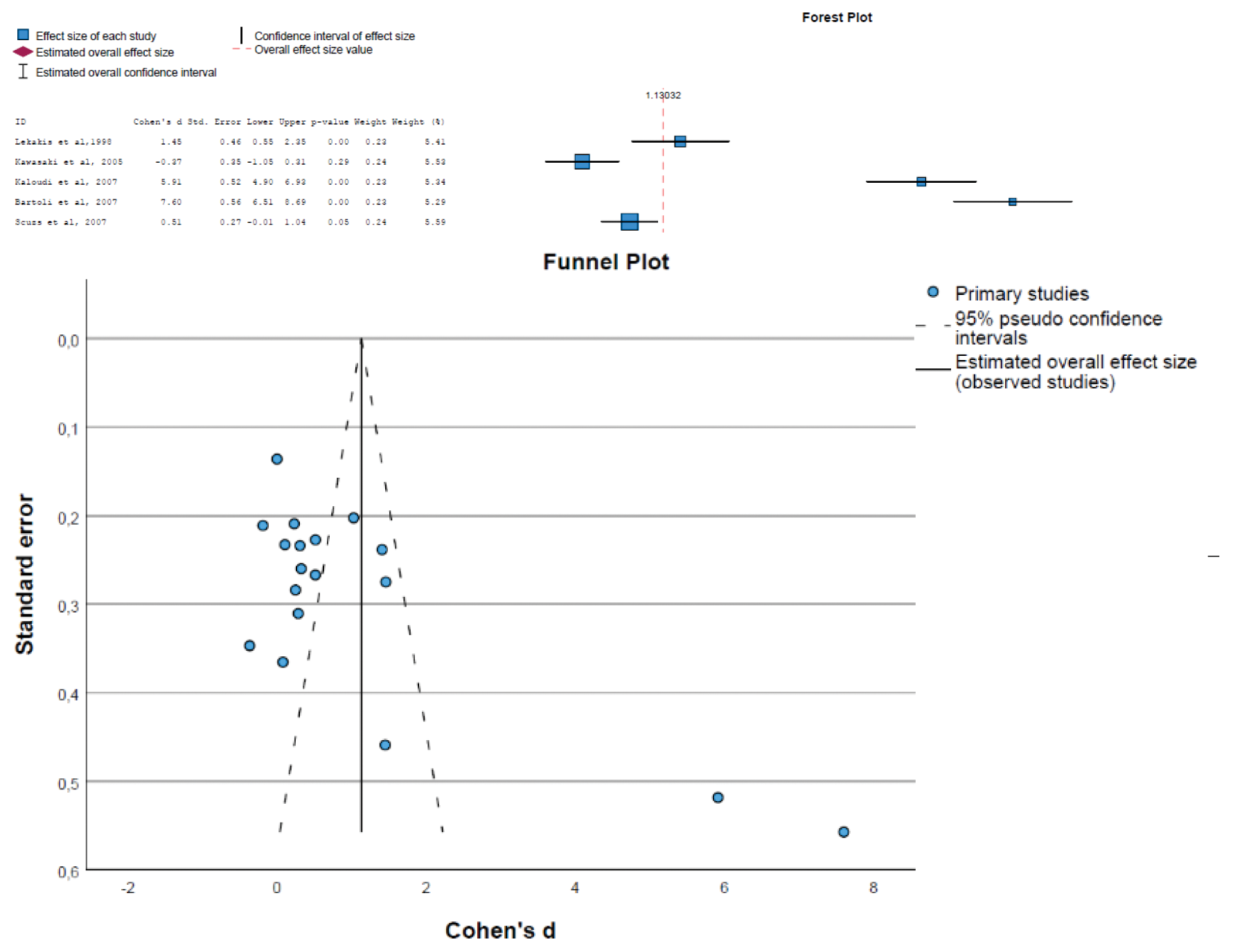

Background: Systemic sclerosis (SSc), a chronic autoimmune disease characterized by progressive fibrosis and vascular abnormalities, poses significant cardiovascular risks for affected individuals. Among these, subclinical atherosclerosis has gained increasing attention as a critical contributor to morbidity and mortality in SSc. Intima-media thickness (IMT) of the carotid arteries, measured through non-invasive imaging techniques, serves as a reliable surrogate marker for early atherosclerotic changes and a predictor of cardiovascular events. In recent years, a growing body of evidence has sought to elucidate the extent and clinical significance of increased IMT in patients with SSc compared to healthy controls.
Objectives: This study aims to evaluate carotid intima-media thickness (IMT) in patients with systemic sclerosis (SSc) through an updated meta-analysis. By synthesizing data from existing literature, the objective is to determine the extent of subclinical atherosclerosis in SSc, identify influencing factors, and assess its clinical significance in cardiovascular risk stratification.
Methods: A systematic review of PubMed, Scopus and Cochrane of studies comparing CIMT in SSc patients and controls was conducted. Effect sizes were pooled using a random-effects model, and heterogeneity was assessed via I² and Tau² statistics. A funnel plot evaluated publication bias.
Results: Data from 18 studies encompassing 1,864 participants (Figure 1) revealed a statistically significant increase in CIMT in SSc patients (Cohen’s d = 1.13, 95% CI 0.18–2.08, p = 0.02). Heterogeneity was substantial (I² = 98%, p < 0.01), highlighting variability in study populations and methodologies. The funnel plot showed several studies outside the pseudo confidence intervals.
Conclusion: This updated meta-analysis confirms significantly increased CIMT in SSc patients, advocating for intensified cardiovascular monitoring and preventative strategies in SSc management.
REFERENCES: [1] Lekakis J et al. Short-term estrogen administration improves abnormal endothelial function in women with systemic sclerosis and Raynaud’s phenomenon. Am Heart J 1998; 136:905_12.
[2] Kawasaki M et al. Assessment of arterial medial characteristics in human carotid arteries using integrated backscatter ultrasound and its histological implications. Atherosclerosis 2005;180:145_54.
[3] Kaloudi O et al. Circulating levels of Nepsilon-(carboxymethyl)lysine are increased in systemic sclerosis. Rheumatology 2007;46:412_6.
[4] Szucs G et al. Endothelial dysfunction precedes atherosclerosis in systemic sclerosis_relevance for prevention of vascular complications. Rheumatology 2007;46:759_62.
[5] Vettori S et al. Clinical and subclinical atherosclerosis in systemic sclerosis: consequences of previous corticosteroid treatment. Scand J Rheumatol 2010;39:485_9.
[6] Tsifetaki N et al. Subclinical atherosclerosis in scleroderma patients. Scand J Rheumatol 2010;39:326_9.
[7] Piccione MC et al. Early identification of vascular damage in patients with systemic sclerosis. Angiology 2011;62:338_43.
[8] Liu J et al. Preferential macrovasculopathy in systemic sclerosis detected by regional pulse wave velocity from wave intensity analysis: comparisons of local and regional arterial stiffness parameters in cases and controls. Arthritis Care Res 2011;63:579_87.
[9] Macedo R et al. Evaluation of carotid artery intima-media complex thickness as a marker of vascular damage secondary to accelerated atherogenesis in progressive systemic sclerosis. Rev Col Bras Cir 2012;39:10_5.
[10] Nordin A et al. Ischemic arterial events and atherosclerosis in patients with systemic sclerosis: a population-based case-control study. Arthritis Res Ther 2013;15:R87.
[11] Domsic RT et al. Endothelial dysfunction is present only in the microvasculature and microcirculation of early diffuse systemic sclerosis patients. Clin Exp Rheumatol 2014;32(Suppl 86):S154_60.
[12] Schiopu E et al. Prevalence of subclinical atherosclerosis is increased in systemic sclerosis and is associated with serum proteins: a crosssectional, controlled study of carotid ultrasound. Rheumatology 2014;53:704_13.
[13] Sedky Abdou MM et al. Premature atherosclerosis in systemic sclerosis patients: Its relation to disease parameters and to traditional risk factors. Int J Rheum Dis. 2017 Mar;20(3):383-389.
[14] Sciarra I et al. Subclinical atherosclerosis in systemic sclerosis: Different risk profiles among patients according to clinical manifestations. Int J Rheum Dis. 2021 Apr;24(4):502-509.
[15] Nguyen Thi Phuong T et al. Atherosclerosis in Vietnamese patients with systemic sclerosis and its relationship to disease and traditional risk factors. Rheumatol Adv Pract. 2022 Jun 2;6(2)
[16] Colaci M et al. Reduction of carotid baroreceptor sensitivity in systemic sclerosis. Clin Exp Rheumatol. 2022 Oct;40(10):1964-1969.

Acknowledgements: NIL.
Disclosure of Interests: None declared.
© The Authors 2025. This abstract is an open access article published in Annals of Rheumatic Diseases under the CC BY-NC-ND license (